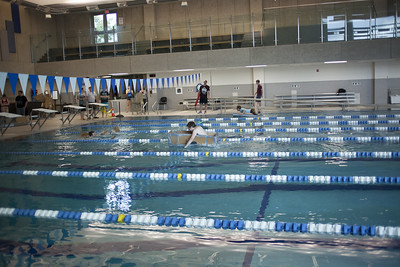Money can be very persuasive, especially when it involves the care and feeding of a swimming pool. As it turns out, swimming pools are incredibly expensive to run, more expensive to maintain, and exorbitantly expensive to repair.
Glendale Community College. Onondaga Community College. Lansing Community College. Ocean County College. Oklahoma City Community College. Arapahoe Community College. Laramie County Community College. Redlands Community College. Tyler Junior College. Foothill College. Portland Community College. Modesto Junior College. Seward County Community College. Rowan College. Muskegon Community College. Grand Rapids Community College.
That’s just a short list of community colleges that have determined that operating a swimming pool isn’t in the best interests of their budgets. Operating a swimming pool can cost hundreds of thousands of dollars every year. But a pool’s operational costs are only one part of the expense associated with a pool. Maintaining a pool – performing the normal wear-and-tear care for a pool – can easily be double the pool’s operational costs.
And then come the repairs. Pools don’t have ordinary repairs. Replacing the filtration system, finding and fixing leaks (not to mention the cost of wasted water – which can number in the hundreds or thousands of gallons a day)– resurfacing the pool, replacing the pool decking – it’s a never-ending parade of expenses. And I don’t care how many users a pool has, the user fees DO NOT cover the cost of these items. If user fees resembled the actual cost of operating, maintaining, and repairing the pool, no one would use a pool because of the expense. Keeping the user fees low means not having enough money to set aside some to cover standard maintenance and/or unexpected repairs to the pool.
Swimming pool operations, maintenance outpace revenues
Community colleges all over the United States are coming to the realization that the expense of operating and maintaining a recreational swimming pool on campus is reducing the amount of money they have for their critical operations. The cost of instruction, declining revenues, and increased expenses have forced hard choices. When the need to choose arises, it’s not hard to prioritize instruction over just about everything else.
Unfortunately, in 2005, the Washtenaw Community College Board of Trustees chose to issue millions of dollars in bonds for the Health and Fitness Center, which they guaranteed with the College’s operating revenues. They made the foolish assumption that revenues would always increase, that enrollment would not decline, that state appropriations would not change. Equally foolishly, they hoped the Health and Fitness Center would somehow pay for itself.
Remember, pools (and by extension, the centers that house them) are expensive to operate, even more expensive to maintain, and ridiculously expensive to repair. They do not pay for themselves, largely because the operator cannot charge the users the true cost of operations, maintenance, and repair. If pools and fitness centers were priced to accomplish full cost recovery, few people could afford to use them. And certainly not people who attend community colleges. (Nearly half of WCC’s students are classified as low-income.)
How long is it going to be before WCC needs to look honestly at the cost of the Health and Fitness Center? When will WCC need to make those hard choices that literally dozens of community colleges have made in recent years?
The Health and Fitness Center wasn’t built for WCC students, and it doesn’t pay for itself, so what exactly does the WCC Board of Trustees hope to accomplish by operating it?
Photo Credit: COD Newsroom , via Flickr




















